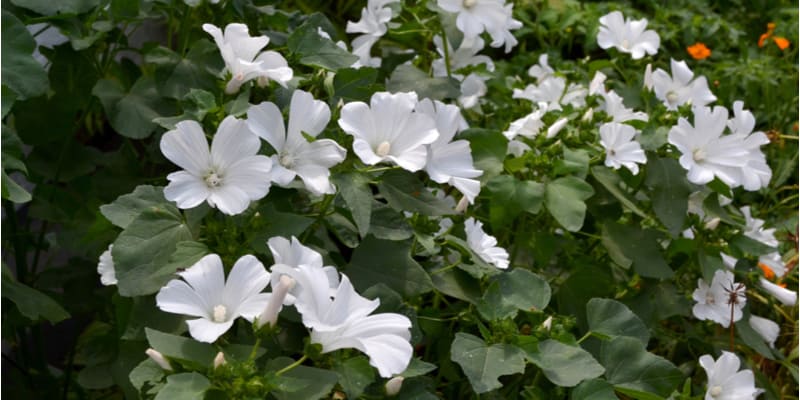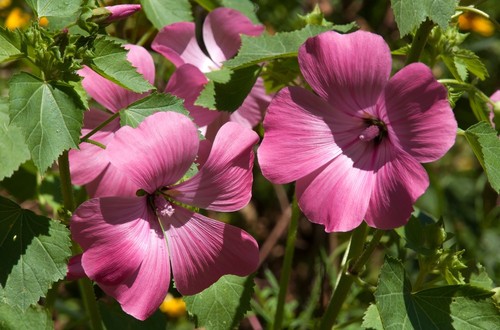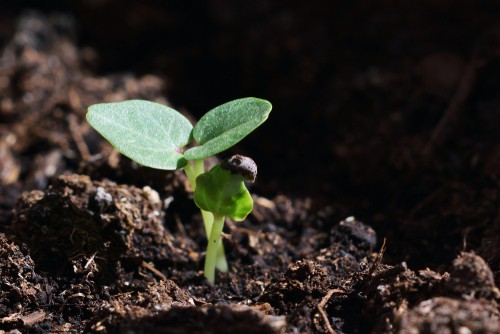
Growing Lavatera in Pots
Our site is reader supported, this means we may earn a small commission from Amazon and other affiliates when you buy through links on our site.
Subtle in appearance spotting elegant blooms, a Lavatera will draw cosmetic attention wherever they are placed. They possess abundant foliage that contrasts well with the bright blooms making them a garden favourite.
Are you curious about growing Lavatera in pots?
Well, you have come to the right place! This article sheds light on when and how to grow these semi-evergreen plants in pots. You will also find tips on caring for your Lavatera in the long run.
What Lavatera plants need to thrive in pots
For your Lavatera to thrive, the conditions inside the pot have to be favourable. First things first, you should use good quality compost so that the plants get the nutrients they need to grow healthily. Ideally, the compost should also have excellent drainage to avoid the issue of waterlogging and don’t forget to put some crockery in the bottom of the pot.
Choosing the right compost
You can purchase a top quality compost online with the perfect balance of minerals at affordable prices. I recommend using a John Innes potting compost as it’s soil-based and also retains moisture very well, unlike most other alternatives.
Position
Another essential component to growing Lavatera in pots is the sun. These plants, just like sunflowers, need hours of direct sunshine to thrive. Make sure that you place the pots where they will get plenty of sun but where they are also sheltered away from cold winds.
Watering
You cannot forget to water the plants, especially when they are young and developing roots systems. Water them regularly, being careful not to flood the soil with water every time. In general, Lavatera need plenty of water and this is even more important for plants grown in pots as they quickly dry out. Allow the surface of the soil to dry out before watering them again.
Care Tips
Caring for Lavatera until maturity does not demand a lot of work. However, it is important to do maintenance once in a while to boost the plant’s growth. Procedures you can implement include:
Pruning Lavatera
Pruning a Lavatera yearly is good for plant growth as it helps the plant reduce deadweight and boosts the production of blooms and green foliage. Additionally, pruning helps contain the plant’s growth because they will be sitting in pots. Prune Lavatera plants in the early spring before the new growth sets in, just as buds swell, but once of the risk of frost has passed. This way, the plant can focus its energy on recovery and the incoming growth.
Be sure to use clean cutting tools because you don’t want to infect the new plants with diseases. Avoid pruning Lavatera late as new growth can be damaged by frost because any new foliage may not have time to fully mature.
You can learn more about pruning your Lavatera here
Deadheading Lavatera to promote more blooms
To prevent the seeds from developing (which takes energy away from promoting new buds and flowers) deadhead your Lavatera. Deadheading simply requires you to remove spent flowers and allow the plant to concentrate on incoming blooms. You can deadhead throughout the season and keep experiencing the blooms until the dormant stage approaches.
Feeding Lavatera in pots
Give your plants a boost in the early spring before any new growth appears. The nutritional boost will give them the best start as the plant can focus its full resources on supporting the new growth and numerous blooms. Measure out the fertiliser well because an overfed Lavatera can promote more leaves rather than the blooms, this is a common problem with Lavatera not flowering. You can read more about why your Lavatera might not be flowering in this guide here.
Growing Lavatera in pots from cuttings
Lavatera is generally a short lived plant, lasting only 3-4 years before they are better off being replaced with a new plant. One of the best ways to do this is by taking cuttings and growing them on.
Softwood cuttings are perfect for propagating Lavatera but you can also take semi-hardwood cuttings, it will just take longer for new growth to set in. Personally, I always take softwood cuttings as they are generally much easier to take and are ready to plant out a little earlier too.
Take softwood cuttings in the late spring or early summer and they should be at least 7-8cm long. Take these cuttings from stems that don’t have blooms because stems with blooms will not focus energy on growing roots.
Once you have taken the cuttings (I recommend taking much more than you need), remove the lower leaves to expose rooting nodes, dip the cuttings in a rooting powder and transfer them to a pot with a moist seed or cutting compost. I like to also put several cuttings around the edge of the pot.
Cover the pots with a plastic bag but be sure to ventilate weekly to let the plant breathe. Keep the soil moist and wait for the roots to set in. You will know if the process has been successful by seeing new growth and starting to see the roots coming out of the bottom of the pot.
Once they’re rooted, you can either separate them and pot them on into individual pots and grow them on or plant them in the garden.
You can learn more about how to take cuttings from Lavatera in my complete guide here
Growing Lavatera in pots from seeds
Once your Lavatera has come into seed and you have collected them, this process can begin. It is important to sow the seeds at the right time for them to germinate successfully. Ideally, Lavatera seeds should be sowed in early spring. To ensure that the seeds have the highest chance of germination, you can start the seeds indoors.
Place the seeds in moist compost or individual peat pots, making sure that the seeds are not fully submerged in the soil and then cover the pot with a plastic bag. The plastic bag helps maintain the humidity level and keeps the temperature constantly warm.
When the seeds germinate usually in two or three weeks, give them another two or three weeks to harden. By hardening the young plants, you raise the chances of survival in outdoor conditions. After hardening, transfer the plant to their permanent pot, ensuring they get plenty of sunlight and adequate water.

